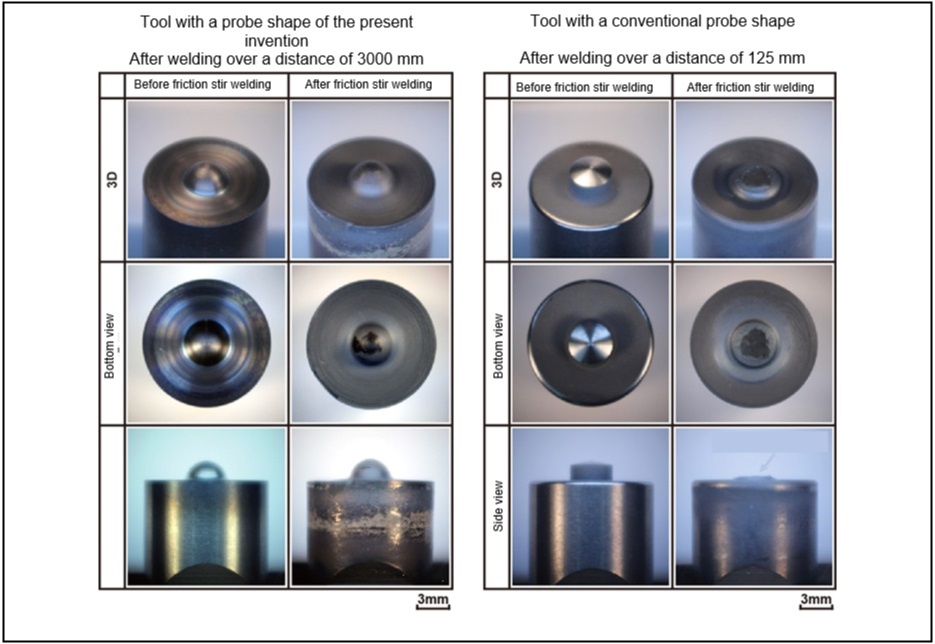A tool and a method for friction stir welding
December 8, 2020
New FSW tools with a tool life more than 30 times longer than that of conventional tools
Key Word : aluminum, durability, friction stir welds, friction stirring, melting, metal alloy, metal processing, metal welding, steel, production
Background / Context / Abstract:
Friction stir welding (FSW) yields many excellent joint characteristics and has been applied to aluminum alloys in various industrial fields soon after its development. However, FSW of steel materials (accounting for a major part of structural materials) has not yet been practically realized on a full scale, owing to issues such as price and durability of tools. While studies on FSW using tools made of polycrystalline cubic boron nitride (PCBN), Co-based alloys, Ir alloys, cemented carbide, and ceramics have been reported to date, a problem encountered in these studies is that tool materials reported to yield a long tool life are expensive. Accordingly, FSW tools at a lower price and with a longer tool life are urgently required.
The inventors have been investigating FSW using FSW tools with various shapes (mainly composed of the main body with a shoulder [contacting directly with the surface of the material to be welded] and a probe [press-fitted into the material to be welded]) and revealed FSW conditions appropriate for various materials to be welded, including steel. Consequently, the inventors have confirmed that breakage of the probe often limits the tool life, because a large load is applied to the probe during a welding process to generate friction with the material to be welded and causes wearing of the probe.
Technology Overview:
The present invention provides a tool for friction stir welding (FSW) that realizes a tool life more than 30 times longer than that of conventional tools.
The present invention provides a tool with a nearly hemispherical probe shape. Although the probe (conventionally with a cylindrical shape) breaks owing to progression of wearing and the process load during a welding process, a nearly hemispherical probe shape suppresses wearing of the probe as well as breakage of the probe at its base. Moreover, the inventors have confirmed that a probe with the said shape was capable of sufficient friction stirring of the material to be welded and formed a satisfactory weld without any defect.
Benefits:
Two FSW tools made of cemented carbide with different probe shapes were prepared: one with a probe shape given in the present invention and the other with a probe shape conventionally used by the inventors. FSW of medium-carbon steel (S55C) plates, 2 mm thick, was separately performed using one of the two FSW tools under a fixed set of welding conditions (400 rpm, 100 mm/min, load 1.4 t). When the tool with a conventional probe shape was used, breakage of the probe was observed after welding over a distance of 125 mm. In contrast, the tool with the probe shape given in the present invention remained intact even after welding over a distance of 3000 mm.
In the case of the tool with the probe shape given in the present invention, the main body (shoulder) wears first, in contrast to the tool with a conventional probe shape.
Potential Applications / Potential Markets:
A tool for friction stir welding (low price and high durability).
Suitably used for welding of high-melting-point metals such as steel.
State of Development / Opportunity / Seeking:
・Available for exclusive and non-exclusive licensing
・Exclusive/non-exclusive evaluation for defined period (set up for options).
・Collaborative/supportive research
IP Status:
Applied in Japan (JPO), not yet published.
Figures:
Contact:
![]()
